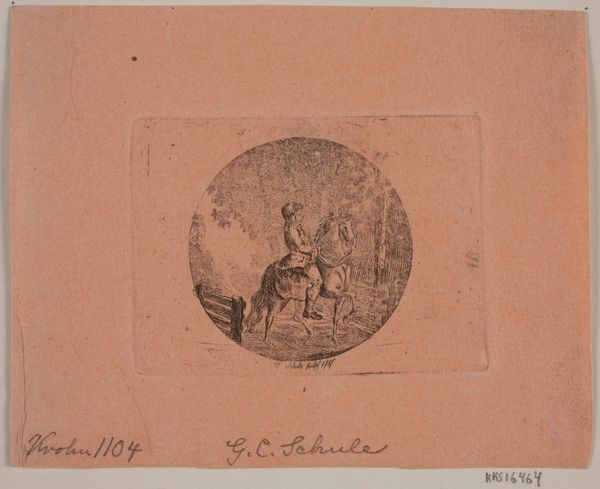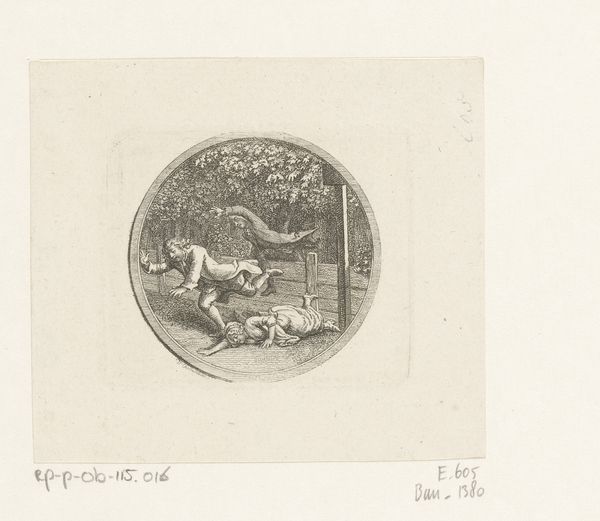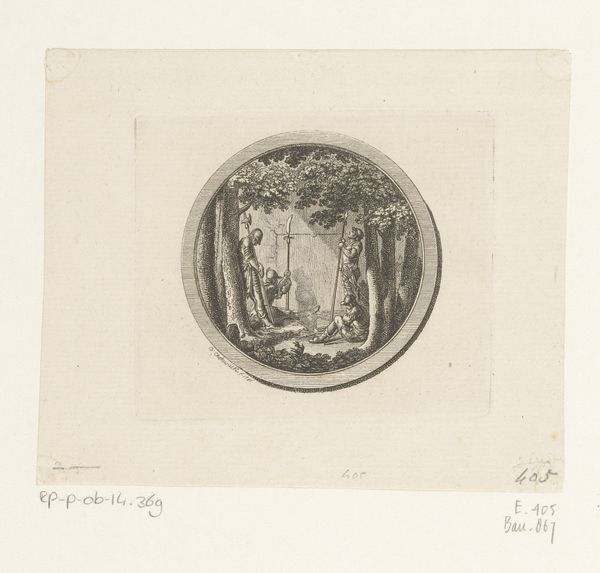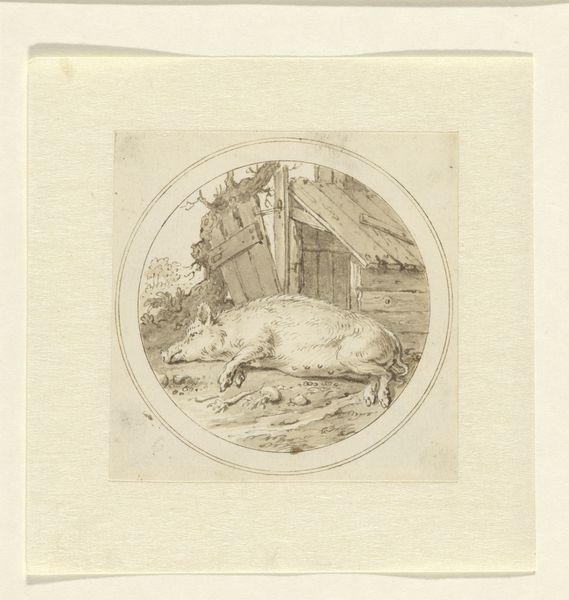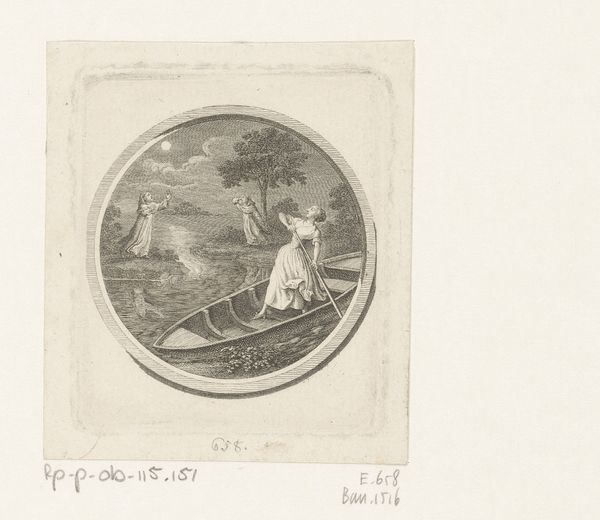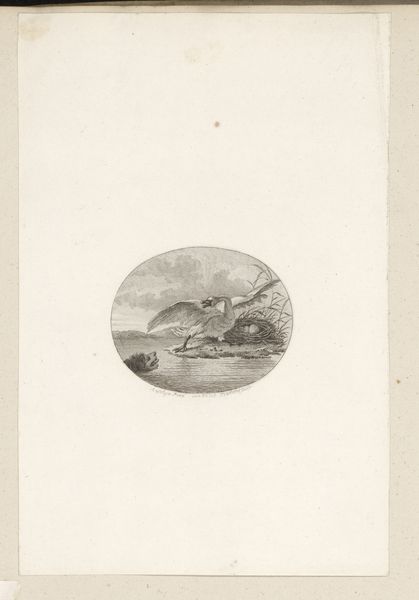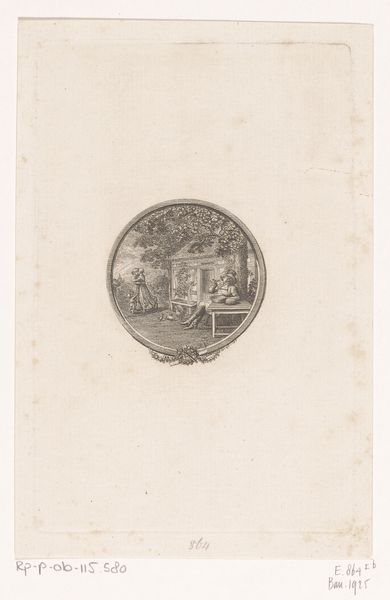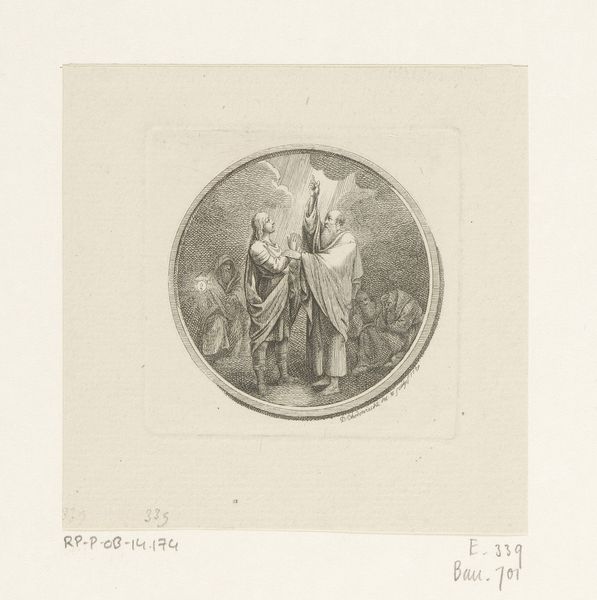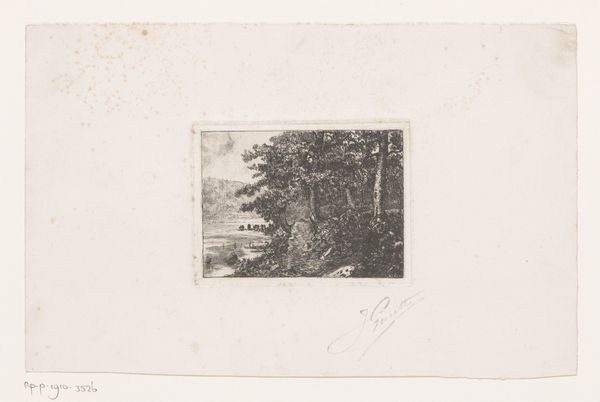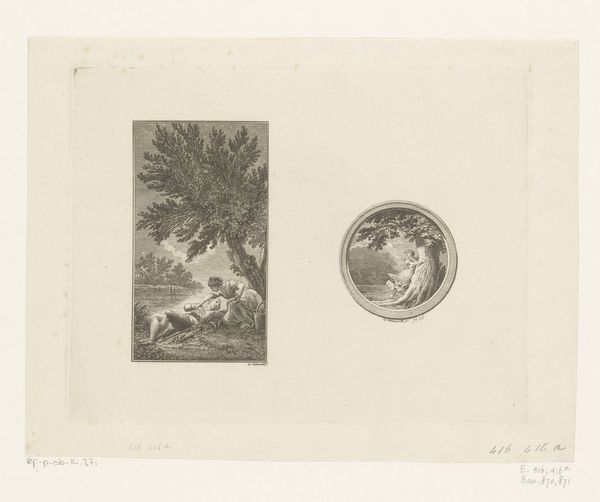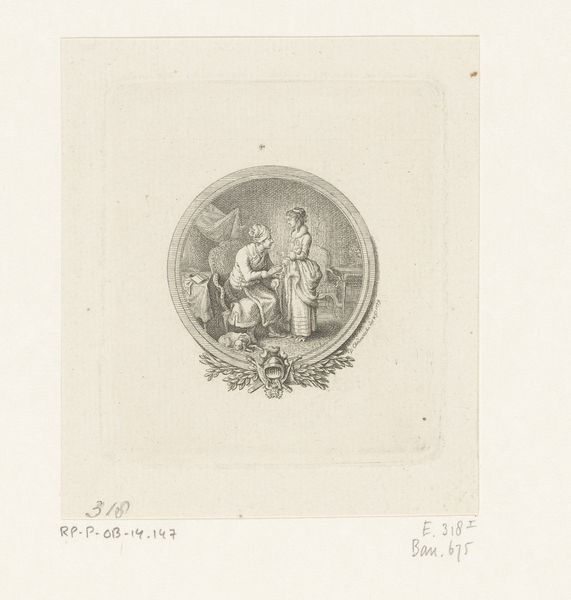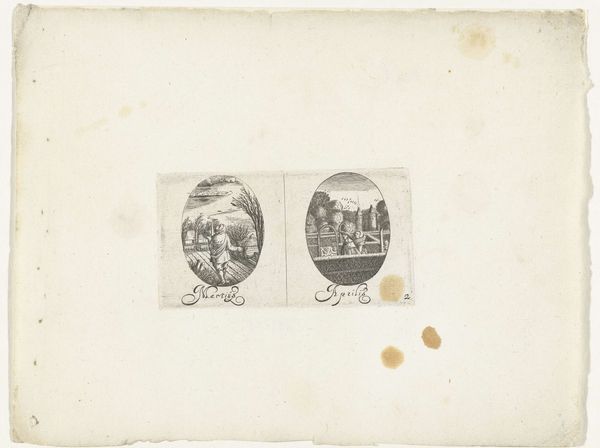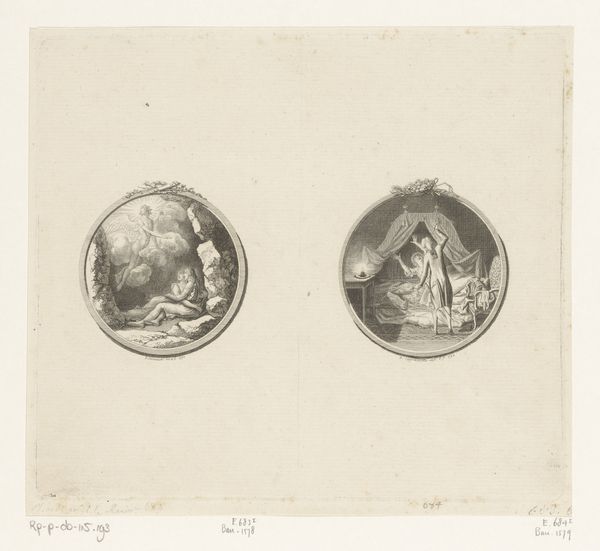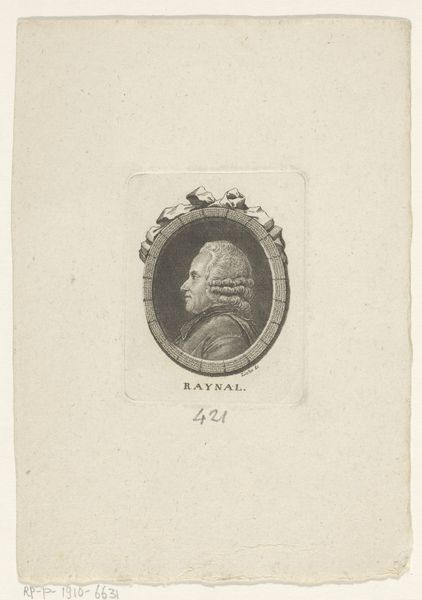
Kip op haar nest, daar achter een steen waarin de tekst 'Venus hemelse moeder' is gehouwen 1787
0:00
0:00
danielnikolauschodowiecki
Rijksmuseum
Dimensions: height 86 mm, width 88 mm
Copyright: Rijks Museum: Open Domain
Curator: Welcome. Here at the Rijksmuseum, we have "Hen on her nest, behind a stone with the text 'Venus heavenly mother' carved into it," an engraving by Daniel Nikolaus Chodowiecki, from 1787. Editor: My first thought is how self-contained it feels. Like peering through a little porthole into a quiet, wooded scene. The density of the linework is really striking. Curator: Chodowiecki worked extensively as a printmaker. The detail he achieves here, the fineness of the lines to create texture and light is exceptional for the medium and its historical context. Consider the socio-political implications of creating reproducible art, making imagery available to a broader audience than ever before. Editor: Absolutely, and that's what strikes me—engraving inherently involves reproduction, it is meant to be copied! The level of precision needed to carve the copper plate and consider each detail speaks to an incredible labor investment for reproduction. The act of multiplying this image for potentially mass consumption impacts our understanding of the work. Curator: This work emerged during a period where philosophical thought, often steeped in romanticism, sought deeper connections with the natural world. Consider the engraving's explicit linkage between earthly motherhood, depicted via the nesting hen, with the inscription, 'Venus heavenly mother’ engraved on the rock face behind her. It reflects a societal interest in fusing domestic virtue with grander mythological narratives. Editor: That rock—a literal inscription—so closely positioned beside the hen, directs how we think about the image and Venus. But I am left wondering if Venus herself might exist apart from the mythology we’ve assigned to her: as embodied within the raw materiality of the natural world? Curator: That's insightful, connecting the engraving's message to nature, while thinking about the materials around us. This piece serves as a glimpse into 18th-century sensibilities around the role of women, motherhood, nature, and art. Editor: Thinking about what printmaking, with the materials available, afforded Chodowiecki helps to consider the many layers of artistic interpretation, historical and personal meaning woven into the piece.
Comments
No comments
Be the first to comment and join the conversation on the ultimate creative platform.
